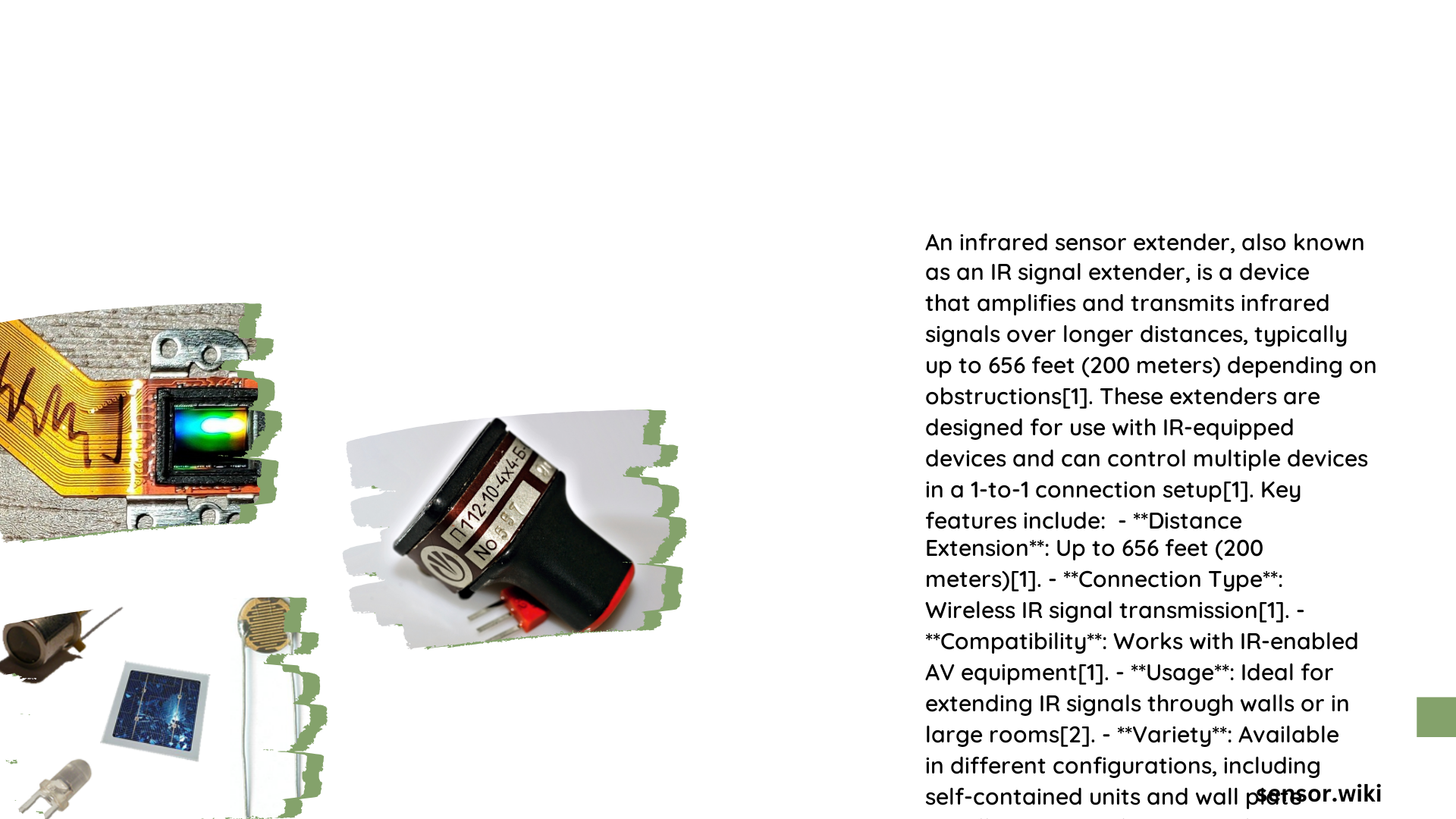Infrared sensor extenders are devices that amplify and relay infrared signals, allowing for increased range and improved functionality of remote-controlled devices. These extenders typically consist of an IR receiver, a signal processor, and one or more IR emitters. They can significantly enhance the operational range of IR-based systems, overcoming obstacles and environmental interference. This article explores the capabilities, installation process, and troubleshooting techniques for infrared sensor extenders.
What are the Maximum and Minimum Operational Ranges for Infrared Sensor Extenders?
The operational range of infrared sensor extenders can vary significantly based on several factors:
Maximum Range:
- High-power IR LED setups can extend the range up to 50 meters or more
- Commercial IR repeater systems often reach 10-20 meters
Minimum Range:
- Standard IR remotes and receivers typically have a minimum range of 1-2 meters
Factors Affecting Range:
- Environmental conditions (sunlight, room lighting)
- Obstacles (walls, furniture)
- Temperature of transmitter and receiver
- Power of IR LEDs
- Sensitivity of receivers
How to Install an Infrared Sensor Extender?

Installing an infrared sensor extender requires careful planning and execution. Here’s a step-by-step guide:
Required Tools:
- Screwdrivers
- Wire strippers
- Electrical tape or connectors
- Drill (for mounting)
Installation Steps:
- Mount the IR Receiver
- Place in a location with clear line of sight to the remote control
- Connect the IR Receiver to the Extender
- Use secure connections and protect from moisture
- Mount the IR Emitter
- Position near the device to be controlled
- Wire Specifications
- Use 18-22 AWG wire for minimal signal loss
- Calibration Procedures
- Adjust position and angle of IR emitter
- Fine-tune output power if necessary
What are the Compatibility Parameters for Infrared Sensor Extenders?
Ensuring compatibility is crucial for the proper functioning of infrared sensor extenders:
Voltage Requirements:
- Most IR systems operate on 3.3V or 5V DC power
Signal Types:
- Common carrier frequency is 38 kHz for consumer electronics
Adapters or Converters:
- May be needed for connector type matching or signal translation
How to Troubleshoot Infrared Sensor Extenders?
When issues arise with infrared sensor extenders, systematic troubleshooting can help identify and resolve problems:
Diagnostic Steps for Range Issues:
- Check Alignment
- Verify Power Supply
- Identify and Mitigate Interference Sources
Installation Errors:
- Incorrect Wiring
- Physical Obstructions
Compatibility Conflicts:
- IR Code Conflicts
- Signal Compatibility Issues
What are the Best Practices for Maintaining Infrared Sensor Extenders?
To ensure optimal performance and longevity of your infrared sensor extender:
- Regular Cleaning
- Gently clean IR emitters and receivers with a soft, lint-free cloth
- Periodic Inspection
- Check for loose connections or damaged components
- Environmental Control
- Minimize exposure to direct sunlight and extreme temperatures
- Firmware Updates
- Keep the extender’s firmware up-to-date if applicable
How to Choose the Right Infrared Sensor Extender for Your Needs?
Selecting the appropriate infrared sensor extender depends on several factors:
- Range Requirements
- Determine the distance between the remote and the controlled device
- Number of Devices
- Consider how many devices need to be controlled
- Environmental Factors
- Assess potential sources of interference in the installation area
- Compatibility
- Ensure compatibility with existing devices and remote controls
- Budget
- Balance features with cost considerations
What are the Future Trends in Infrared Sensor Extender Technology?
The field of infrared sensor extenders continues to evolve:
- Integration with Smart Home Systems
- Seamless incorporation into IoT ecosystems
- Enhanced Signal Processing
- Improved noise reduction and signal amplification techniques
- Miniaturization
- Smaller, more discreet extender components
- Multi-Protocol Support
- Ability to work with various IR protocols and frequencies
- Energy Efficiency
- Lower power consumption and potential for battery-powered operation
By understanding these aspects of infrared sensor extenders, users can maximize the effectiveness of their remote-controlled devices and overcome common limitations associated with IR technology.
References:
1. Extended range IR sensors – Arduino Forum
2. How IR Repeater Systems Work – Audioholics
3. IR range/wide area extender – diyAudio
